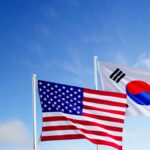Table of Contents
Published: March 24, 2025 | By WorldAffair.org
The geopolitical landscape in 2025 is fraught with numerous challenges, as regional conflicts, rising powers, and global tensions intersect. While the world’s focus on international issues may shift, several conflicts continue to shape the political, economic, and humanitarian future. From prolonged wars to new flashpoints, these conflicts not only influence regional stability but also have far-reaching consequences for global peace. Below, we delve into the most critical geopolitical conflicts of 2025, examining their historical context, current dynamics, and potential outcomes.

🇺🇦 Russia-Ukraine War: Stalemate and Ceasefire Negotiations
The war between Russia and Ukraine, which began in February 2022, continues to be a central issue in global geopolitics. Despite significant international involvement, including support for Ukraine from NATO and the European Union, the conflict remains unresolved. As 2025 unfolds, both sides are entrenched in their positions, and the prospect of a quick resolution seems unlikely.
Historical Context:
The conflict is rooted in long-standing tensions between Russia and Ukraine, dating back to the 2014 annexation of Crimea and the conflict in eastern Ukraine. In 2022, Russia’s invasion escalated tensions, with the goal of reasserting its influence over Ukraine, which had increasingly aligned itself with the West.
Current Situation:
As of 2025, Russia and Ukraine remain locked in a military deadlock, with both sides suffering significant casualties. Despite high-profile peace talks, the two countries are far from reaching a lasting agreement. The United States and European powers continue to provide military and financial support to Ukraine, while Russia presses forward with its territorial objectives.
- Impact on Europe: The war has strained Europe’s energy resources, with the EU facing a major energy crisis due to sanctions imposed on Russia and disruptions in energy supplies.
- Humanitarian Consequences: The conflict has caused devastating human suffering, displacing millions of Ukrainians and leaving cities in ruins. Ukraine’s infrastructure is decimated, while the Russian military faces increasing resistance from Ukrainian forces.
While discussions for a ceasefire are ongoing, there are deep divisions regarding the terms, especially concerning Russia’s territorial demands. The prospect of a negotiated settlement or prolonged escalation depends on political shifts in both countries and the broader international community.

🇨🇳 China-Taiwan Tensions: Rising Threats of Invasion
China’s assertiveness regarding Taiwan has escalated in recent years, and experts warn that military action could be imminent. As 2025 progresses, the likelihood of a confrontation remains high, with both diplomatic and military dimensions in play. The situation has broader implications for U.S.-China relations and stability in the Asia-Pacific region.
Historical Context:
The tensions over Taiwan date back to the Chinese Civil War, when the Republic of China retreated to Taiwan in 1949 after the Communist Party’s victory on the mainland. Since then, Beijing has considered Taiwan a breakaway province and has vowed to reunify it with the mainland. Over the decades, Taiwan has developed its own democratic system, while China has maintained its stance of eventual reunification.
Current Situation:
- Military Posturing: China has increased military drills around Taiwan, including air and naval exercises aimed at intimidating the island. Military experts warn that China’s military strategy now includes potential tactics such as air assaults, naval blockades, and even full-scale invasions to force Taiwan into surrender.
- U.S. Involvement: The United States maintains a policy of “strategic ambiguity,” supporting Taiwan’s self-defense without explicitly committing to direct military intervention. However, Taiwan’s military capabilities remain far smaller and less advanced compared to China’s.
As China ramps up pressure on Taiwan, the international community remains divided on how to respond. The U.S. is heavily invested in maintaining the status quo, while China continues to view Taiwan as a core issue of national sovereignty. The potential for conflict grows as both sides continue to prepare for the worst.

🇮🇱 Middle East: Israel-Gaza and West Bank Confrontations
The Israeli-Palestinian conflict has been one of the longest-running and most intractable disputes in modern history. Despite intermittent ceasefires and peace talks, violence in Gaza and the West Bank remains pervasive. In 2025, the situation is exacerbated by growing tensions between Israeli settlers and Palestinian civilians.
Historical Context:
The roots of the Israeli-Palestinian conflict date back to the early 20th century, with competing national movements and territorial claims. Over the decades, several wars and uprisings (intifadas) have further entrenched divisions. The establishment of the state of Israel in 1948 led to the displacement of Palestinian Arabs, and this issue remains a key point of contention.
Current Situation:
- Gaza Conflict: The situation in Gaza is dire, with periodic military operations between Israel and Hamas, the Palestinian militant group. The humanitarian situation in Gaza continues to deteriorate, with civilian casualties on both sides and limited access to food, medicine, and other essential services.
- West Bank Tensions: The expansion of Israeli settlements in the West Bank has led to violent clashes between Israeli settlers and Palestinians. Protests have intensified, leading to a greater security crackdown by Israeli forces.
Efforts for a two-state solution have stalled, with both sides accusing each other of undermining peace efforts. The current Israeli government’s stance remains focused on security concerns, while Palestinian leadership is divided, with some factions seeking international recognition and others pursuing armed resistance.

🇸🇩 Sudan: Civil War and Humanitarian Crisis
Sudan’s civil war has entered a particularly brutal phase, with multiple factions vying for control of the country. The war, which has been ongoing since 2019, has caused severe displacement, widespread atrocities, and a deteriorating humanitarian situation.
Historical Context:
Sudan has faced decades of political instability, with a history of military coups and conflict, including the Darfur crisis and the secession of South Sudan in 2011. After the ousting of long-time leader Omar al-Bashir in 2019, Sudan entered a fragile transitional phase, which was derailed by military clashes and political fragmentation.
Current Situation:
- Conflict Expansion: The war between Sudan’s military leaders and rebel groups has intensified, with fighting spilling over into neighboring regions. Ethnic and tribal divisions have worsened the violence, and civilians continue to bear the brunt of the conflict.
- Humanitarian Crisis: More than 4 million people have been displaced, and the humanitarian situation remains dire. The international community is struggling to provide sufficient aid due to security concerns and the absence of a functioning government.
The civil war in Sudan poses significant challenges not only for the country but also for the wider region, as neighboring countries face the threat of instability spilling across their borders.

Global Trade Wars: Economic Protectionism and Green Tech Access
Economic protectionism is on the rise as the U.S. and other major economies impose tariffs and trade restrictions on key sectors, particularly technology and green energy. These trade wars have the potential to disrupt global supply chains and hinder efforts to combat climate change.
Historical Context:
The trend toward protectionism accelerated following the 2008 global financial crisis, as countries sought to shield their domestic industries from external shocks. The U.S. has increasingly adopted an “America First” approach, while China and other emerging economies have pushed back against trade barriers.
Current Situation:
- Technology and Green Tech: Key industries like semiconductor manufacturing and renewable energy technologies are at the center of these trade wars. Tariffs on critical materials used in green technologies have raised concerns about the future of global decarbonization efforts.
- Global Supply Chain Disruptions: The economic rivalry between the U.S. and China has caused major disruptions to global supply chains, particularly in technology and industrial sectors. These disruptions are leading to higher production costs and delays, which are impacting global markets.
These trade conflicts are reshaping the global economic order and may slow down global efforts to transition to cleaner energy sources, exacerbating both environmental and economic challenges.

🇪🇺 Europe’s Nuclear Deterrence: Calls for Expansion
Europe is reconsidering its defense strategy in the face of growing external threats, particularly from Russia. In 2025, discussions about expanding Europe’s nuclear deterrent have gained traction, with countries like France and Germany advocating for greater autonomy in defense capabilities.
Historical Context:
Europe has relied on NATO’s nuclear deterrent for security since the end of World War II. However, with increasing Russian military activity and the unpredictability of U.S. security commitments, some European leaders are questioning whether they can rely solely on the U.S. nuclear umbrella.
Current Situation:
- Nuclear Ambitions: Countries like France, which already possesses nuclear weapons, have called for greater European collaboration in defense, including potential nuclear deterrence expansion.
- NATO’s Role: NATO remains the cornerstone of Europe’s defense strategy, but concerns over its ability to deter Russian aggression have led to calls for a more independent European defense structure.
The debate over nuclear deterrence highlights Europe’s growing concerns about its security, especially in light of changing global alliances and the perceived decline of U.S. involvement in European defense.

Conclusion
The geopolitical landscape in 2025 is shaped by a series of unresolved conflicts and rising tensions that pose significant challenges to international peace and security. From wars in Ukraine and Taiwan to regional instability in Sudan and the Middle East, the world is facing a period of unprecedented uncertainty. These conflicts are likely to evolve and intertwine, creating a complex web of political, economic, and humanitarian issues that will demand global attention and action.
As the year progresses, it is imperative for global leaders to find diplomatic solutions to these crises, while also preparing for the potential consequences of continued instability. The future of global geopolitics hinges on how these conflicts are managed and whether the international community can foster peace amid growing tensions.
Author Profile
- Syed Tahir Abbas is a Master's student at Southwest University, Chongqing, specializing in international relations and sustainable development. His research focuses on U.S.-China diplomacy, global geopolitics, and the role of education in shaping international policies. Syed has contributed to academic discussions on political dynamics, economic growth, and sustainable energy, aiming to offer fresh insights into global affairs.
Latest entries
 Japanese PoliticsSeptember 6, 2025Prince Hisahito’s Coming-of-Age and Japan’s Male-Only Succession Dilemma
Japanese PoliticsSeptember 6, 2025Prince Hisahito’s Coming-of-Age and Japan’s Male-Only Succession Dilemma GeopoliticsAugust 23, 2025Previewing the White House Visit of South Korean President Lee Jae Myung
GeopoliticsAugust 23, 2025Previewing the White House Visit of South Korean President Lee Jae Myung Middle East ConflictJuly 22, 2025Israel’s Deadly Attacks on Gaza: A Dire Humanitarian Crisis and International Calls for a Truce
Middle East ConflictJuly 22, 2025Israel’s Deadly Attacks on Gaza: A Dire Humanitarian Crisis and International Calls for a Truce Middle East & North AfricaJuly 20, 2025Israel Targets Damascus Amid Rising Tensions in Syria
Middle East & North AfricaJuly 20, 2025Israel Targets Damascus Amid Rising Tensions in Syria

